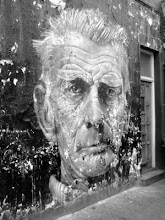When Jack Black sang “It’s a long way to the top, if you wanna rock and roll” in the 2003 film School of Rock, he knew of what he sang. That line, a perfect ohrwurm if ever there was one, wormed through my own ears yesterday evening as I headed to North London. It got slightly altered along the way to “It’s a long way up to Hampstead if you have to walk,” and indeed it is. Especially from Mortlake. On a cold December night.
Penury had forced me to take Shanks’s Pony to Keats’s House in this charming part of London as I had accepted an invitation to chair an event for Pushkin Press and Daunt Books. It was however to prove worth the shoe leather as something extraordinary happened.
The occasion was the launch of a new Pushkin title, The Allure of Chanel, originally written by Paul Morand and published in 1979 in French. Now available in an exquisite translation by Euan Cameron, it contains quite superb illustrations by none other than Karl Lagerfeld and photographs by Henri Cartier-Bresson and Jean Moral, to name but two. It tells the story of ‘Mademoiselle’ in her own words, as recounted to Morand over a number of days and weeks in 1946 when the writer and designer met in a hotel, the Badrutt’s Palace in St Moritz, Switzerland, awaiting post war calm to allow her return to France. Chanel was at this time unemployed, exiled and ‘waiting to become wealthy again.’ It was a difficult time for her, the sulphurous whiff of collaboration hanging about her, perhaps fittingly for the self styled “only volcano from the Auvergne that is not extinct.” It may be that feeling oppressed and unhappy, she chose this time to tell her story and to self-mythologise parts of it, especially her childhood years. Some believe this to be the case. I, however, am no expert on her and her life and cannot comment. What I can say is that it is a fascinating read and a wonderful insight into the mind and character of a force of nature, a pioneer of both couture and arguably feminism. And all this despite the fact that I'm probably not in the target demographic for the book, but a good story well told has universal appeal.
The evening was an enchanting one. Sitting next to an illuminated Christmas tree, in a beautiful room, in the former home of such an illustrious poet was inspirational. The 50 or so members of the audience were engaged with the conversation between Mr Cameron and myself and engaging with their questions and comments. There was a warmth to the proceedings, a literary conviviality as Cameron’s beautifully prepared piece on Morand and Chanel met with interest and approval. The publisher had flown in from New York and two of the doyens of Pushkin arrived by Eurostar. Richard Strange, the actor, musician and man of letters, one of the finest fellows I know (he once trashed an art gallery with Jack Nicholson) and who is possessed of charm, talent and extraordinary generosity was there, fresh from the film set of the latest Harry Potter film and with his brilliant wife and lovely daughter. The questions came and when neither Euan nor I had answers, other members of the audience offered their insights.
One of the joys of a smaller event is that it can be run less as a performance and more an open talking shop. One audience member, sitting in the front row, who gave her name as Emma, shared insights that belied her youth. As we delved deeper into Chanel’s life, she seemed to be possessed of yet more answers, more rejoinders, all delivered in a voice, an accent, as sweet and soft as crème Chantilly. I laughingly asked her “You’re too young to have known Coco Chanel, but I don’t suppose you’re in some way related… are you…?” She paused and looked at me. I thought she was insulted, that I had in some way ruined the evening for her and was half way through stumbling out a hurried, defusing, apology when she said “Not to Coco no, but my Great Aunt and her husband were two of Mademoiselle’s closest friends,”
Oh boy. Not only could you have heard a pin drop but you could almost feel and hear the goose bumps rising throughout the room. Emma’s great aunt and her husband are mentioned throughout the book and have a chapter devoted to each of them. One of Karl Lagerfeld’s illustrations is of Emma’s forebear wearing none other than an early ‘little black dress.’ It was an extraordinary moment of the sort that happens so occasionally at such events and is gloriously unforgettable when it does.
When at the beginning of this piece I said that something extraordinary happened, I may have slightly dissembled, for as if that wasn’t enough something else occurred. Sitting across the aisle from Emma, also in the front row, was a beguiling, elegant angel. Graceful, alluring and shining with calm intelligence, she was tall enough that when I stretched my legs out at one point, our toe-caps nearly touched and I swear a Michelangelo, Sistine chapel ‘spark of creation’ moment occurred. Whether she felt the same thing is as yet unknown. I therefore can’t write “but that’s another story.” Not yet at least.
So while it may not have been an evening of rock and roll, rock and roll was indeed present. Even when it is a 'long way up to Hampstead when you have to walk' and twice as far if you have to walk back, the return was on feet so much lighter than those that took me there. Chanel’s allure was indisputable. The allure of “The Allure of Chanel’ evening only goes to show that there is still romantic inspiration to be found at Keats’ House.
Yours,
LibraDoodle.



